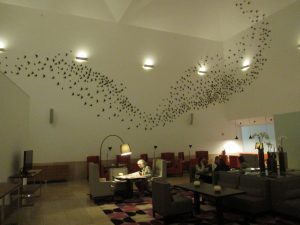 Month by month below
Month by month below
I spend a lot of my time reading, both for research and simply for pleasure. This area of my website is an experiment in recording what books I am reading and any responses to them.
As a general pattern I usually I have two fiction books ‘on the go’ as I read one aloud to my husband for a short time each night and another that I read for myself, usually more quickly. Alongside these I might be dropping in and out of reading several non-fiction books for research (as well as journal articles) and other books to support my spiritual life.
March 2024
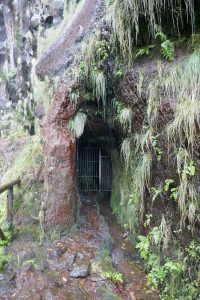
Just lots of papers on plant ethics this month. Although I have been reading Dante’s The Divine Comedy (the Mark Musa translation) which I am finding strange, confusing and enlightening in equal measure. Fortunately this is part of a guided study so I hope that it will become clearer.
For unalloyed pleasure I am rereading A.S.Byatt’s The Matisse Stories each one a perfect study of sensory engagement with the world. Also, in a similar way, the (ostensibly) children’s story The Little Grey Men by B.B. There are passages of nature writing in this that are astounding.
February
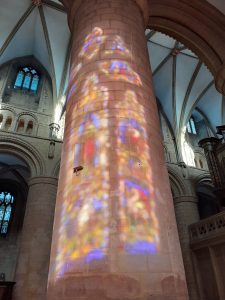
Cold and rainy weather promotes curling up with a book. I have enjoyed Evie Woods’The Lost Bookshop which has a love of old books at its heart as well as some forgivable magical comings and goings. Also the sparsely beautiful The Guest Cat by Takashi Hiraide. I moved on to a continuation of Marc Hamer’s story with his Seed to Dust: a gardener’s story.
On transpersonal psychology I have got a lot from Donald Kalsched’s Trauma and the Soul.
For a Sufi inspired book I am reading The Open Path by Elias Amidon, but this is slow going because the exercises it suggests take some time to remember to do and then to try again as they bear multiple repetitions.
January
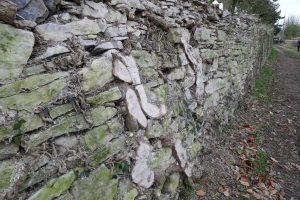
This month’s reading was dominated by books and papers on plant ethics for the preparation of an abstract for a conference. Most useful was a collection edited by Angela Kallhoff and others called Plant Ethics: concepts and applications. But there was also Mathew Hall’s Plants as persons: a philosophical botany.
For relaxation I am enjoying William Boyd’s The Romantic this is a ‘whole life’ novel and the life it tracks is adventurous, although the adventures seem to happen to the central character as he catapults from one mad scheme to the next. I also found strangly compelling an autobiographical book by Marc Hamer called How to Catch a Mole. It is about how he, as a molecatcher, went about his trade, but also about so much more.
December 2023

It seemed like a month of finishing off books started last month or even longer ago. One new one was a beautiful Christmas present of an illustration rich book called Botanic Gardens of the World by Deborah Trentham. Although not exhaustive (for example why isn’t Palermo there?) it does cover most of the important botanic gardens from across the world with a few extras thrown in. The text is informative and the book does inspire more travel, which is probably why Warwick gave it to me.
For reading together we are on Sabastian Faulks’ The Seventh Son I had read about half and realised the material it covers speculating about the difference between Neanderthal and Homo sapien consciousness would make it a good one to share, so started at the beginning again. Working in the opposite direction I went back to finish M.R. Carey’s Infinity Gate which we had baled on together. Once the action moves beyond a single person on a wrecked planet it becomes an incredibly inventive and a tense adventure for a strange group of beings, including self-conscious technology, against formidable opponents across multiple parallel universes. CLIFF-HANGER WARNING – it ends suddenly. There will be a second book but it isn’t out yet.
November
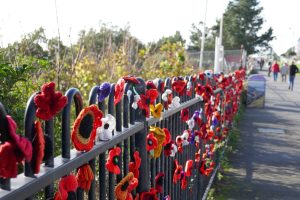
For my birthday at the end of October I received two wonderful books. A large and luscious text book Plant Anatomy: a concept based approach, which I have only dipped into so far, and Tristan Gooley’s How to Read a Tree a much lighter affair and very enjoyable. I have also found Andrea Wulf’s Magnificent Rebels: the first romantics and the invention of the self very informative and engagingly written although a bookmark with all the characters on would be helpful. Even if you know a little about the creative ferment in early 19th century Jena and Weimar it is easy to get mixed up.
Novels this month have included Human Traces and Snow Country by Sabastien Faulks. These two related novels are excellent studies of what it means to be human. The first focuses on early psychiatry moving into psychoanalysis and the latter book takes in events around the first world war, but not depicting war as such. Both include brilliant depictions of an inner self navigating a complex world.
For inner work I have been reading – rather slowly – Putting on the Mind of Christ by Jim Marion.
October
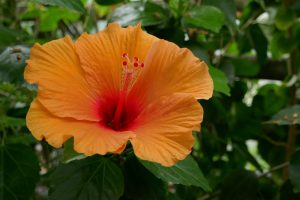 This month involved reading to assist with revisions to an aesthetics paper and included Arnold Berleant’s Sense and Sensibility: the aesthetic transformation of the human world. This was very much a rereading as I did review the book many years ago, but it was helpful to engage with it again, particularly on the topic of negative aesthetics.
This month involved reading to assist with revisions to an aesthetics paper and included Arnold Berleant’s Sense and Sensibility: the aesthetic transformation of the human world. This was very much a rereading as I did review the book many years ago, but it was helpful to engage with it again, particularly on the topic of negative aesthetics.
I, at last, got around to reading John Wyndham’s The Day of the Triffids (part of my dystopian plants in literature study). I hadn’t rushed to it having seen an old film and heard a radio adaptation so knew the story. Although now dated in its sexual and class politics (it was written in 1951) it is a really gripping read both thoughtful and thought provoking about the human condition.
For pleasure I read Kate Atkinson’s new book Normal Rules Don’t Apply. I rarely read short stories but of course make an exception for the author of Life After Life. The stories begin with a strange mixture of the commonplace and add something odd here and there. It is only as you realise that they interlock that the book takes on more depth and becomes both witty and stirring.
September
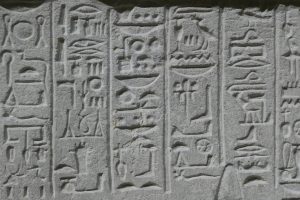
Travel to Leiden meant long train journeys so lots of time for reading. I was hugely entertained by the Jonathon Fairfax books by Christopher Shelvin. It is best to start with the first one The Perpetual Astonishment of Jonathon Fairfax as it is here that we get properly introduced to the beguiling character Jonathon, a man whose sole talent appears to be drawing rabbits in waistcoats, well that and an alarming degree of self-uncertainty and social awkwardness. None of this prevents him becoming embroiled in plots and political mayhem. Then there was another great spy novel from Mick Herron The Secret Hours which is not a slow horses novel but gives the backstory to so much that happens in those books. I read this at the same time as listening to the abridged version on Radio 4, which was fascinating to do. I have no idea how anyone listening to the abridged version would have a clue about what is going on. I seem to be on a bit of a summer roll with easy reading thrillers because I also enjoyed the latest Robert Galbraith (aka JK Rowling) The Running Grave. The writing style is poor but the plot (with Robin having to go undercover in a cult) just kept me hooked.
For beautiful writing I have been savouring Mary Oliver’s poetry collection Devotions, which is, at last, out in paperback. And on the plant front I have been appreciating both the writing and the information in Ken Thompson’s Darwin’s Most Wonderful Plants.
August

This month has been marked by not quite settling on a joint reading book. After the tremendous success and long period with the Koli Trilogy we tried another M.R. Carey book Infinity Gate but it has none of the same evocative description so was abandoned, as was David Lodge’s Changing Places. I will probably finish that one by myself – there are long train journeys coming up. We have settled on The Whalebone Theatre by Joanna Quinn which begins well so we will stay the course I think. (Alas we gave up about a third of the way in, the children are interesting characters but the adults less so and seem like caricatures.)
I continue with Byatt’s Frederika quartet, now on the last book A Whistling Woman possibly the least successful of them but I have a sense of committment to the characters now. Interestingly we have been watching some tv of the same era e.g., Parkinson’s interview with Bronowski (who takes time to think before framing an answer) which chimes with the debates in the book about whether tv can be a medium for serious thought.
July
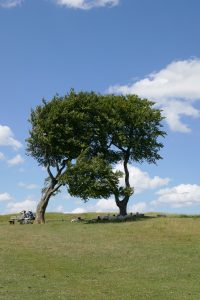
This month involved a few garden history books in order to complete a chapter comparing three gardens, two of which were historical: Hidcote and Villandry.
(The picture is from Cleeve Hill near Cheltenham, a reminder of an excellent walk on one of the few sunny days this month.)
Fiction wise I am on to the third book of the Frederika quartet Babletower and it continues to be as thoughtful and entertaining as I remember.
I also very much enjoyed Anthony Doerr’s All the Light We Cannot See. This story alternates between two talented children, a blind girl living in France and and boy in a German orphanage. It tracks them both through the second world war where their stories join for a very short time. The story is chilling in its depiction of the rise of nazism and particularly its impact on the young recruits at atraining camp, with our male character struggling to both resist its extremes and yet still keep his place. Both central characters are well drawn and detailed with the sensory world of the blind girl richly summoned and the ambiguities and confused ‘absences’ of the boy realistically portrayed. There is more to the story with radio transmission and its meaning invoked and a quasi mythical jewel that helps to drive the plot, but it is the characters themselves that keep the pages turning long into the night.
June

This month I was very pleased to find Stella Sandford’s book Vegetal Sex: philosophy of plants a very thorough examination of the problem of using zoocentric models when discussing the nature of plants. The book also contains an excellent critical discussion of what we might think of enlightened anthropomorphism in support of plants. Other than that a continuation of last month. Reading seems to slow down in the summer when there is more travel and gardening happening. The stones are from Swinside Stone Circle, a rarely visited but dramatic complete circle in Cumbria.
May 2023
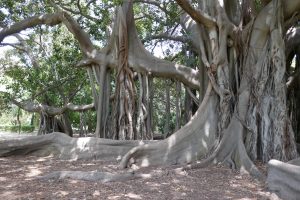 Reading in May included work in preparation for attending a conference in Palermo Botanical Garden on the ‘vegetal turn’. This included Through Vegetal Being by Luce Irigaray and Michael Marder. It has an interesting structure relating to correspondance, with the first half by Irigaray and the second half by Marder but both follow the same sequence of chapter headings. I read it straight through the first time and am now returning to read the parallel chapters together.
Reading in May included work in preparation for attending a conference in Palermo Botanical Garden on the ‘vegetal turn’. This included Through Vegetal Being by Luce Irigaray and Michael Marder. It has an interesting structure relating to correspondance, with the first half by Irigaray and the second half by Marder but both follow the same sequence of chapter headings. I read it straight through the first time and am now returning to read the parallel chapters together.
During long continental train journeys I have enjoyed novels such as The Forgetting by Hannah Beckerman which has an interesting plot twist. Enjoyed doesn’t quite suit the next one, which was The Girl With all the Gifts by M.R. Carey because it is well done but really scary.
I also returned after many years to A.S. Byatt’s Frederica Quartet because it is such a rich experience. On this second reading I am struck by the quality of the digressions (George Eliot like) when the author reflects on the process and meaning of writing and creating characters or on the visual sense and colour. Rather than interrupting the story they bring out its depth.
On psycho/spiritual matters I am still reading Teilhard de Chardin and other writings on him, such as those by Ursula King. Along with this I have been exploring the writings of James Hollis Finding Meaning in the Second Half of Life – how to finally, really grow up is excellent as a Jungian inspired text.
April
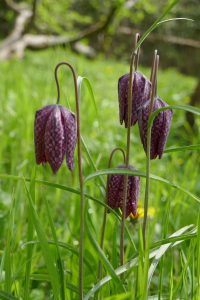
In April I started on the research for a chapter on Gardens. This was a wonderful excuse to pull out of the bookshelf many picture heavy – and literally heavy – garden books. Of these the one that I read, rather than swiftly plundered, was Gardens of Inspiration edited by Erica Hunningher. The format is 15 eminent gardeners talking about the gardens that inspired them. A winning formula!
Novels have included Sally Vickers’ Cousins but I am not enjoying it much, probably because I am only reading a few pages a night. I usually enjoy multi-generational novels but this one is not always easy to follow, especially when characters have more than one name and there are three seperate narrators each with a restricted view of the unfolding of events. The latter aspect is well done, with a distinctive voice and worldview for each narrator, but common family threads showing through under the personas.
Still reading Teilhard de Chardin but also Awakening the Heart a book of essays on East/West approaches to psychotherapy and the healing relationship. This is edited by John Welwood and although it dates from 1985 some of the essays are fresh and spark interesting questions.
March
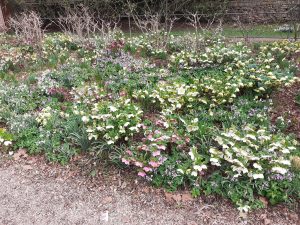
Still embroiled in the Lilith’s Brood trilogy, have finished Adulthood Rites and started on Imago. It is interesting to see how the story unfolds with the different interpretations that can be placed on the aliens’ attempts to ‘help’ humanity by changing it and the human ‘resisters’ who want to remain fully human. Plenty of posthumanism questioning going on.
For joint reading we are sort of enjoying In Ascension by Martin Macinnes. I say sort of because it is not a patch on The Mountain and the Sea by Ray Naylor but is in the same speculative fiction category.
For non-fiction (with my paper sent off) I can at last get back to some purely plant focused reading I am excited about Sumana Roy’s How I Became a Tree. Only just started it so will update this later.
February
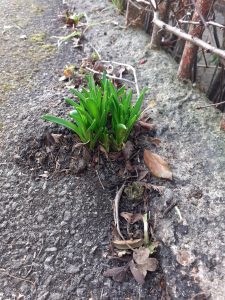
Fiction this month has included more speculative fiction as I have been immersed in the post apocalpse story of the Octavia Butler’s Lilith’s brood trilogy, starting with Dawn which sets the stage with the remaining humans on Earth being rescued by aliens who want to correct the fatal human flaw – “the contradiction” – of being both intelligent and heirarchical.
I am still writing a paper on rural landscapes and this has involved academic material on the conservation or regenerative farming problem of farmers’ strong preference for a tidy landscape. Also material on agricultural terracing, which, strangely, led to reading Hoffman’s translation of the Tao Teh Ching.
Otherwise I continue with Divine Milieu.
January
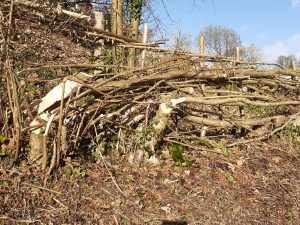
Fiction revelation this month was the amazing speculative fiction book by Ray Naylor The Mountain in the Sea. So inventive, and blends insightful thinking about the nature of consciousness and communication, along with a gripping storyline. It includes AI and octopuses. I have also been reading the poetry of Gerard Manley Hopkins along with texts of literary criticism on his work.
January non-fiction has all been about getting a paper on rural landscapes written so this has included: John Wright’s A Natural History of the Hedgerow , Tim Ingold’s Being Alive (to try to get to bottom of his idea of ‘taskscape’) and Ronald Hepburn’s book of essays Wonder (well worth multiple reads).
I continued my study of Teilhard de Chardin with his The Heart of Matter and also Ursula King’s Christ in All Things: exploring spirituality with Teilhard de Chardin. The Divine Milieu and all his work is astounding and his life story fascinating.
December 2022
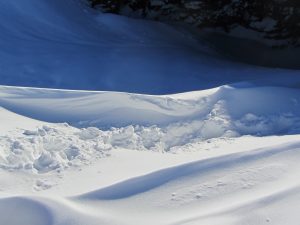
This month for fiction I am reading novels with plant themes. First a beautifully written and inventive story by Elif Shafak The Island of Missing Trees with its central characters of a young Cypriot girl growing up in England and a fig tree that her father brought over with them. Alternating chapters are given to the girl and the fig tree. Then Janice Pariat’s Everything The Light Touches. This is again inventive and one of those novels that switches to a new story and central character just as you are engrossed in the previous one, but it quickly engages you with a whole new story. A central thread emerging is the way they all relate to plants. This book also afforded me the peculiar experience of reading a novel and finding myself quoted in the voice of one of the characters. The third novel I hope to complete over the Christmas break is Diane Wilson’s The Seed Keeper.
For research it is all about landscape this month. For a relief from the complexity of many academic papers on the subject I am enjoying and learning a lot from How to Read the Landscape by Patrick Whitefield (of permaculture fame).
Best audio book this month was Diane Setterfield’s Bellman and Black -a beautifully told story with a mix of practical period detail and otherworldliness that she does so well.
To engage in a ‘depths of winter’ contemplation I have chosen to return to studying Teilhard de Chardin’s The Divine Milieu with the help of Louis Savary’s The Divine Milieu Explained.
November
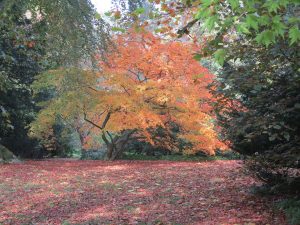
This month brought an influx of books partly thanks to my reviewing a manuscript for Columbia University Press and hence their offer of 10 books from their catalogue. I will only list these individually when I get to actually read them. The only one I have dipped into so far is The Life of the Imagination: revealing and making the world by Jennifer Anna Gosetti-Ferencei, which looks fascinating and written in a readable style. I did find and get to read Chauncey Maher’s book Plant Minds: a philosophical defence, which came out in 2017 but I only just came across it. Otherwise for research it is all papers at the moment.
My current novel of choice is Richard Powers’ Bewilderment a shorter book than his usual doorstoppers and a beautiful story that includes the telling of a child’s very reasonable reaction to extinctions and environmental destruction against society’s and even one’s own buffered response to these mounting tragedies.
Household chores this month have been lightened with the addictive audio books by Mick Herron featuring the private investigator Zoe Boehm. I think I have now either read or listened to everything by Herron so can get my life back!
October

A holiday in Northern Spain plus the preceeding and following holiday mood allowed for quite a bit of fiction reading. Ian McEwan’s Lessons is a wonderful book. It’s such a pleasure to have a long book to sink into. A wonderfully observed trajectory of a character who has trouble taking charge of his own life set against the backdrop of the 1940s to present time in England. Then another long book: Kate Atkinson’s Shrines of Gaiety which is taking shape very well so far. (Having finished I have to say it is well written and engaging but not amazing – certainly not on the level of Life After Life.) Current bedtime reading aloud is Maggie O’Farrell’s Hamnet which I loved the first time round and it is just as enjoyable the second time. Another wonderful submersion into fiction (via audiobook) was Diane Setterfield’s Once Upon a River, an interesting tale but also an insightful reflection on storytelling.
Back at my desk I have last month’s reading still in progress plus Brilliant Green: the suprising history and science of plant intellegence by Stefano Mancuso and Alessandra Viola. Also Life on the Edge: the coming of age of quantum biology by Jim Al-Khalili and Johnjoe McFadden, which was in Stroud library – what a find – and a due back date to get it read by!
September
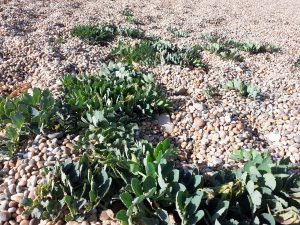 This month I managed to clear my desk of other tasks and pull together the various books and papers I have been gathering on plant intelligence and behaviour. The recently published Planta Sapiens by Paco Calvo elucidates crucial ideas in this field, such as the shift to thinking of cognition as something happening between an organism and its environment. It is a more engaging read though not as good on the detail as Anthony Trewavas’ Plant Behaviour and Intelligence, which really begins at the beginning by starting with the evolution of organisms in order to build an explanation of plants’ problem solving skills. These plus a mountain of academic papers on the subject are taking my time.
This month I managed to clear my desk of other tasks and pull together the various books and papers I have been gathering on plant intelligence and behaviour. The recently published Planta Sapiens by Paco Calvo elucidates crucial ideas in this field, such as the shift to thinking of cognition as something happening between an organism and its environment. It is a more engaging read though not as good on the detail as Anthony Trewavas’ Plant Behaviour and Intelligence, which really begins at the beginning by starting with the evolution of organisms in order to build an explanation of plants’ problem solving skills. These plus a mountain of academic papers on the subject are taking my time.
For more spiritual work am almost through reading Thomas Moore’s The Soul’s Religion this has some beautiful chapters, but of all his books Care of the Soul is the stand out one I think. Certainly if you only read one of his I would make it that one. I am also working through Piero Ferrucci’s Your Inner Will.
In fiction I am reading Orhan Pamuk’s My Name is Red because it was so highly recommended and the themes look fascinating, although I have yet to settle in to it.
August
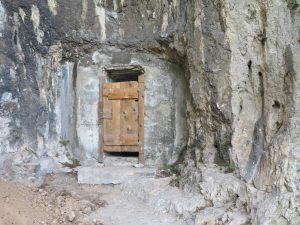
The great find of the Summer is M.R. Carey’s Koli trilogy. I read The Book of Koli because I had been alerted to it including content that relates to trees (thanks Amazon – those algorithms are becoming scarily precise). It is a brilliant dystopian novel narrated by a teenger who has to navigate the problems of staying alive and understanding the world after being exiled from his community. The world is post-apocalyptic with dangerous trees, the loss of literacy and stray bits of technology from the “before-times”. I am currently half way through The Trials of Koli and looking forward to The Fall of Koli . In hot summer weather a series of fat engaging books is a fine thing. I can still recall one summer immersing myself in A.S. Byatt’s outstanding Frederika Quartet.
Thanks to a colleague I now have access to Goethe’s Botanical Writings, originally called The Author Relates the History of His Botanical Studies.
July

Following a visit to the Wellcome Collection’s exhibition ‘Rooted Beings’ I am reading the related publication This Book is a Plant. Also due to a recommendation I am reading Nick Hayes’ The Book of Trespass which promises to be both inspired nature writing and politically strident as well as being illustrated by the author. On nature writing I am also some way into Annie Dillard’s The Abundance which moves between the brilliant capturing of wonder but also mundane aspects of the everyday.
Probably the most personally exciting bit of reading occured because of writing to the Hunt Institute for Botanical Documentation in Pittsburgh. I had asked if they had a copy of the school magazine article that Agnes Robinson (later Arber) had written when she was 15. They had it and kindly sent me a digitized copy along with a digitized copy of her notebook! In the top corner of the notebook it says “Summer Holidays 1894”. The notebook contains a careful study of the ivy-leaved toadflax. The writing and illustrations beautifully capture Agnes as a young girl fascinated by plants and diligent in pursuit of knowledge about them.
For morning meditation I have returned to Neil Douglas-Klotz’s The Sufi Book of Life. Previously I worked with this study of 99 pathways by opening it at random, now I am working through it from 0-99.
And for escapist pleasure the next slow horses book is on hold until I complete my own illustration of the ivy-leaved toadflax.
June 2022
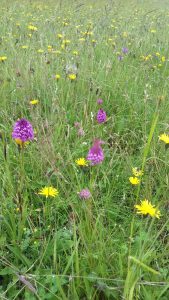
I think June will mainly be about finishing off books started previously. Sometimes there are so many ‘on the go’ that it seems crazy to start anything new.
I have been rereading Goethe’s Metamorphosis of Plants and the introductions from various editions. I have also been frustrated by not being able to find his essay History of my Botanical Study in English – so that’s something not read.
For pleasure we have embarked on Jo Harkin’s Tell Me an Ending which has a memory theme similar to the fantastic book The Binding by Brigit Collins. (Unfortunately Harkin’s book suffers from a problem of much contemporary literature of failing to conjour up characters that a reader can care about. Perhaps something happened after half way through but we didn’t wait to find out).
May

Reading Agnes Arber continues including her beautiful book Monocotyledons with its simple but accurate and expressive line drawings. Also another book on Hildegard –Hildegard of Bingen: healing and the nature of the cosmos by Heinrich Schipperges. A very long wait at Malvern train station allowed me to get through a few chapters as well as enjoy the candles of chestnut blossom in the park outside the station.
I had to take some time out of work on my botanist heroes paper to write an abstract about rural landscape. This meant I got around to properly reading Brady and Arntzen’s excellent Humans in the Land: the ethics and aesthetics of the cultural landscape along with dipping into many other books and papers.
Wanting to re-aquire some Carol Shields novels that have a plant theme, such as Larry’s Party and The Stone Diaries, led me to discover a few books by her that I didn’t know and I have just finished A Celibate Season. This is an epistolary novel that she wrote jointly with Blanche Howard. (A husband and wife are separated to different provinces in Canada for work reasons and can’t afford phone calls so write letters. These letters record their changing selves and changing relationship. A classic Shields set up and themes but interestingly done.)
For psychosynthesis research I am reading John Heron’s 1990 book Subpersonalities: the people inside us. Early on in the book he gives a tour de force on definitions covering a vast number of psychologists and theories using their own terms but explaining that they all refer to subpersonalities. Also following an inspiring ‘Wild Scribe’ weekend with Mary Reynolds Thompson I am reading her Reclaiming the Wild Soul: how earth’s landscapes restore us to wholeness.
Best audiobook this month for me is Sick Souls, Healthy Minds: how William James can save your life. John Kaag presents a really good introduction to James’ life and work but feeds this through into his own life and gives a great illustration how long term engagement with a philosopher can help guide a life.
For escapism I am getting quite gripped by the 2nd of the Slow Horses books – Dead Lions. These Mick Herron books about a disfunctional outpost of MI5 are fun to read. Update: I finished that and went straight to the next one, Real Tigers, which I also finished and am now denying myself another one until the next section of my writing is finished. The games we play!
April
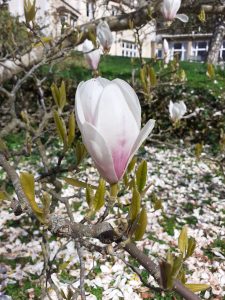
I have been enjoying an immersion into the wonderful writings of the botanist/philosopher Agnes Arber. In particular her Natural Philosophy of Plant Form together with her last book The Manifold and the One. Some of the botany in the former is too advanced for me to follow, but I get the gist and coupled with the more metaphysical work it forms an exciting journey.
Along with this adventure is further study of psychosynthesis through Firman and Gila’s Psychosynthesis: a psychology of the spirit. This is an excellent book for pulling together material and presenting it in a clear, but not oversimplified, form.
This month also brings me to the end of Richard Rohr’s A Spring Within Us book of daily meditations. This was such a rich experience and I felt beautifully guided across the year so I wondered about just starting from the beginning again. However, the last week of the book focused on silence so I have chosen Robert Sardello’s book Silence: the mystery of wholeness to study after my meditation each morning. It seems to bear very slow reading, e.g., going back over a paragraph just completed to let it resonate or allow it to strike a different note. Also on silence, another older book that had passed me by jumped into my hands in the oxfam bookshop. Morton Kelsey’s The Other side of Silence: a guide to Christian meditation. It looks like an interesting blend of Christian mysticism and Jungian psychology.
Looking for an amusing novel, to lighten these difficult times, I came across Alissa Nutting’s Made for Love but am not gripped yet and might have to switch to something else. (Update: stuck it out to the end but it lacks just about everything a good novel needs.) If only Philip Pulman would get on with the third part in the Book of Dust Trilogy!
March

The texts on Hildegard still seem to be proliferating on my desk but I must get on with reading Theophrastus’s Enquiry Into Plants and other texts by him. I am also finding Morton’s History of Botanical Science very helpful and Mathew Hall’s Plants as Persons: a philosophical botany.
But March is not all heavy going as I have the joy of reading Philippa Pearce’s Tom’s Midnight Garden for the first time! I am not sure how that one got away during both my childhood and bringing up my children, but I am making up for it now. Jean Rhys’ Wide Sargasso Sea is also on my bedside table for a reread. It won’t escape the observant reader of these notes (if there are any readers at all) that both novels have a forgrounding of vegetal life – it seems there is no escape for me.
I am also getting a lot from M. Scott Peck’s The Road Less Travelled another bestseller that passed me by until now. Just finished it – a couple of the analogies used are dated or worse – but it is an excellent read. Really useful for exploring the relationship between psychotherapy and spirituality. The current audio book of choice is Richard Tarnas’s Cosmos and Psyche (more on that when I have finished it)
February
 This month begins with a shift in focus for a new chapter I am working on called (for the moment) Plant Heroes but probably should be something like Heroes of Botany. First off I need to understand (or have some approximation of understanding) St Hildegaard of Bingen. Hence I am reading Mathew Fox Hildegard of Bingen: a saint for our times, which brings St H into conversation with contemporary voices such as Mary Oliver and Clarissa Pinkola Estes. Also Michael Marder Green Mass: the ecological theology of St. Hildegard of Bingen, which explores her idea of viriditas, and Wighard Strehlow Hildegard of Bingen’s Medicine.
This month begins with a shift in focus for a new chapter I am working on called (for the moment) Plant Heroes but probably should be something like Heroes of Botany. First off I need to understand (or have some approximation of understanding) St Hildegaard of Bingen. Hence I am reading Mathew Fox Hildegard of Bingen: a saint for our times, which brings St H into conversation with contemporary voices such as Mary Oliver and Clarissa Pinkola Estes. Also Michael Marder Green Mass: the ecological theology of St. Hildegard of Bingen, which explores her idea of viriditas, and Wighard Strehlow Hildegard of Bingen’s Medicine.
For relaxation I have greatly enjoyed Leigh Bardugo’s Ninth House, set at Yale its a kind of Secret History, Dragon Tattoo, Harry Potter mash up. I absorbed this as an audiobook. Another audiobook finished this month was Labyrinths by Catrine Clay, it’s a biography of Emma Jung and the early days of psychoanalysis. This would be a fascinating book to read before or after Jung’s Memories, Dreams Reflections.
January 2022
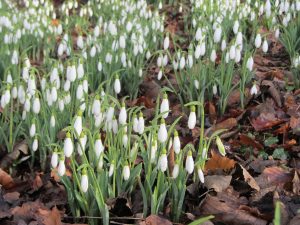 Sally Vickers The Librarian (I have been reading a few of Vickers’ books since finding The Gardener in my local bookshop (Stroud Books) in such a beautifully produced little hardback that I was seduced into buying it. After last year, when I read a lot of Marilynne Robinson, I find Vickers interesting and engaging but not as profound.
Sally Vickers The Librarian (I have been reading a few of Vickers’ books since finding The Gardener in my local bookshop (Stroud Books) in such a beautifully produced little hardback that I was seduced into buying it. After last year, when I read a lot of Marilynne Robinson, I find Vickers interesting and engaging but not as profound.
Amor Towles The Lincoln Highway is proving to be a great hit for reading aloud, it is a meandering tale of a road trip across the States that is delayed by lots of diversions. Chapters are voiced by different characters including an endearingly pedantic dreamer of a 9 year old boy.
Charles Lewis Green Nature Human Nature: the meaning of plants in our lives Just been rereading this older book alongside lots of recent papers in the area. A joy to come back to and very insightful.
Richard Rohr A Spring Within Us I started using this book of Franciscan inspired daily meditations back last spring and it is still enriching every day.
Yuriko Saito Aesthetics of the Familiar: everydaylife and worldmaking a beautiful book that is currently bringing alive both aesthetics as a philosophical subject and the experience of slicing tomatoes for me.
John C. Ryan, Patricia Vieira & Monica Gagliano (eds) The Mind of Plants: narratives of vegetal intelligence a book of 36 chapters each capturing encounters, interactions and reflections on a plant. With so many plants and so many authors included I am taking this one slowly.
Two re-reads that just make it into January are David Sedaris Naked a moving and amusing autobiographical piece and Julian Barnes The Only Story, which is a reflection on memory and narration as much as a love story. These are re-reads after a fashion: I was driven to my kindle on recent train journeys (due to mask = steamed up glasses) and I just don’t remember what I read on kindle so it was like encountering them almost afresh.